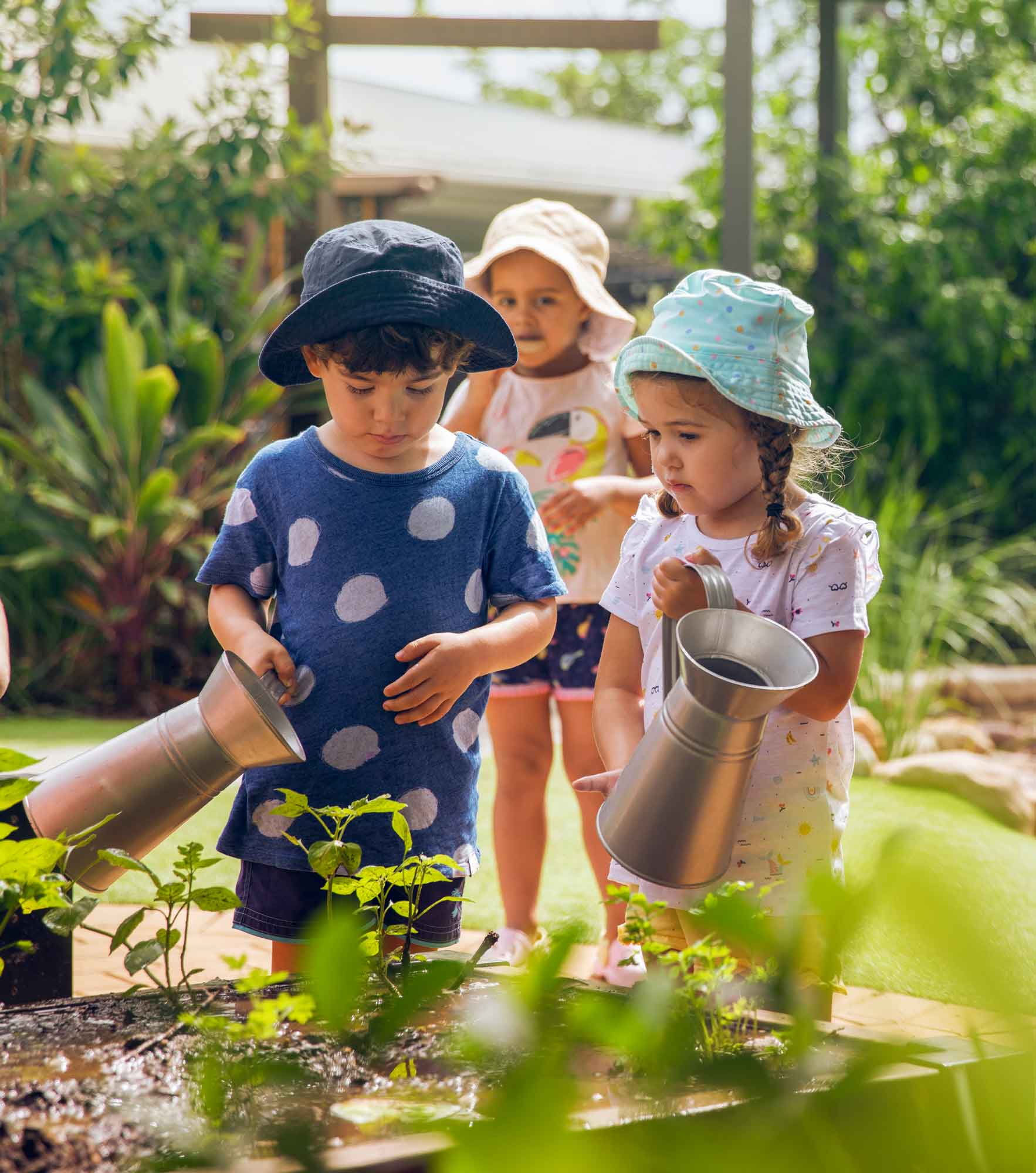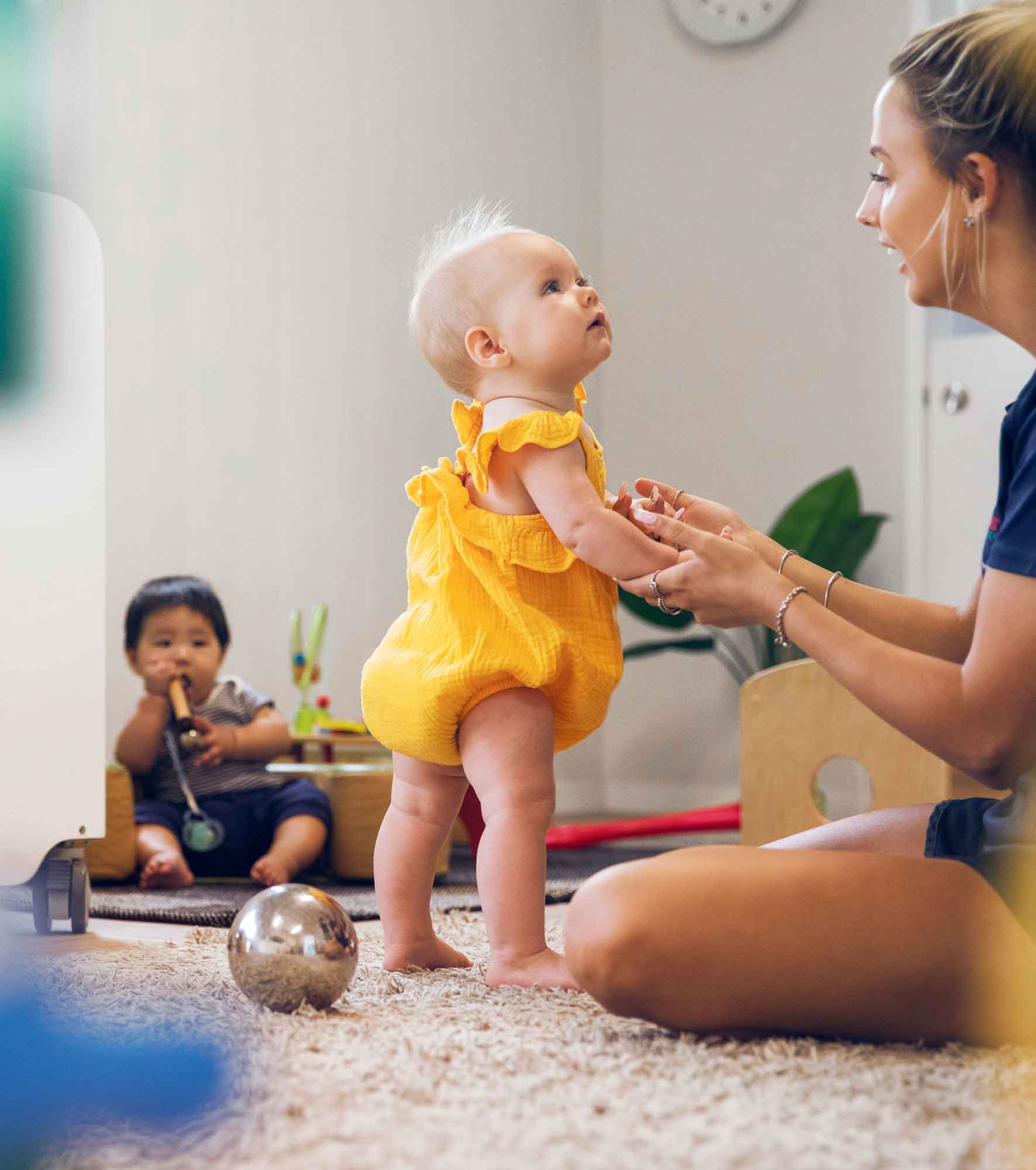Sensory Play: Benefits And Activities In 2024
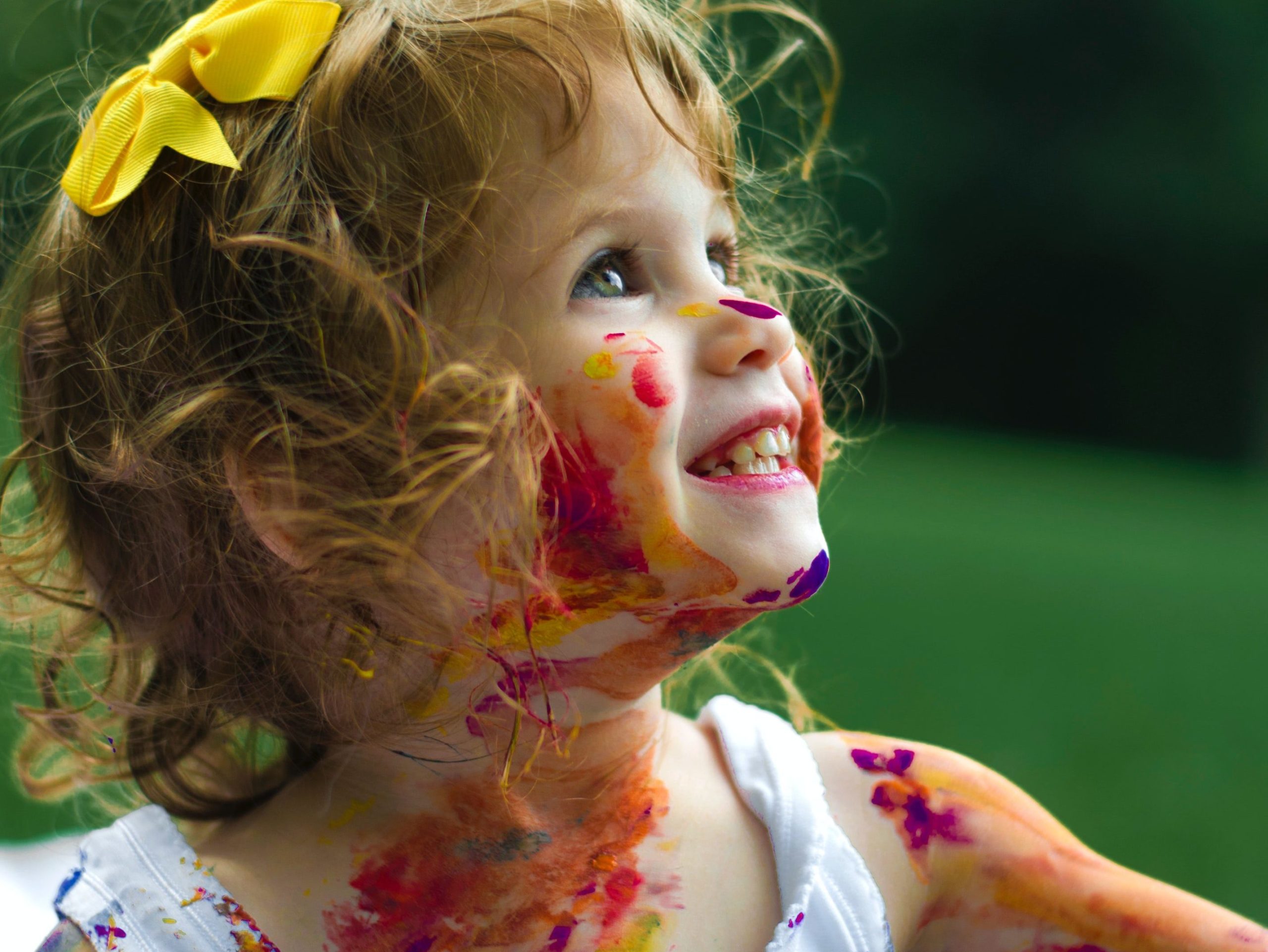
Benefits of sensory play
Language Development
Sensory play helps children learn new ways of talking about the world. It supports their language development and encourages them to communicate effectively with others whilst playing.
Cognitive Growth
Sensory play supports a child’s cognitive growth; enhancing their thought process, understanding and reasoning. As children manipulate new materials, they learn to understand new concepts.
Social Interaction
A positive sensory play environment encourages children to interact and work with others effectively, which is essential for a child’s development. They begin to share their ideas and build new relationships.
Awareness
Active sensory play helps children become more self-aware and body-aware, which helps them develop a better sense of space around them.
Comforting
Sensory play is essential for children’s wellbeing as it helps children to reduce stress, as well as stimulate children’s senses such as touch, sight and smell.
Adaptability
Sensory play encourages children to adapt in new situations. They begin to learn that they can use sensory play resources in a variety of ways and differentiate between different scenarios through discovery.
Activity: Making Goo
Age Group
3 – 5 years
Materials needed
• Cornflour
• Water
• Food colouring (optional)
• Marbles (optional)

Method
- Empty the box of cornflour into a bowl.
- Add 1 1/2 cups of water.
- Add about 15 drops of food colouring. It’s fine without colour, too.
- Mix the goo with your hands.
- Store goo in a sealed container when you’re done using it. If it dries out, simply add more water.
- You can put marbles in for extra sensory stimulation.
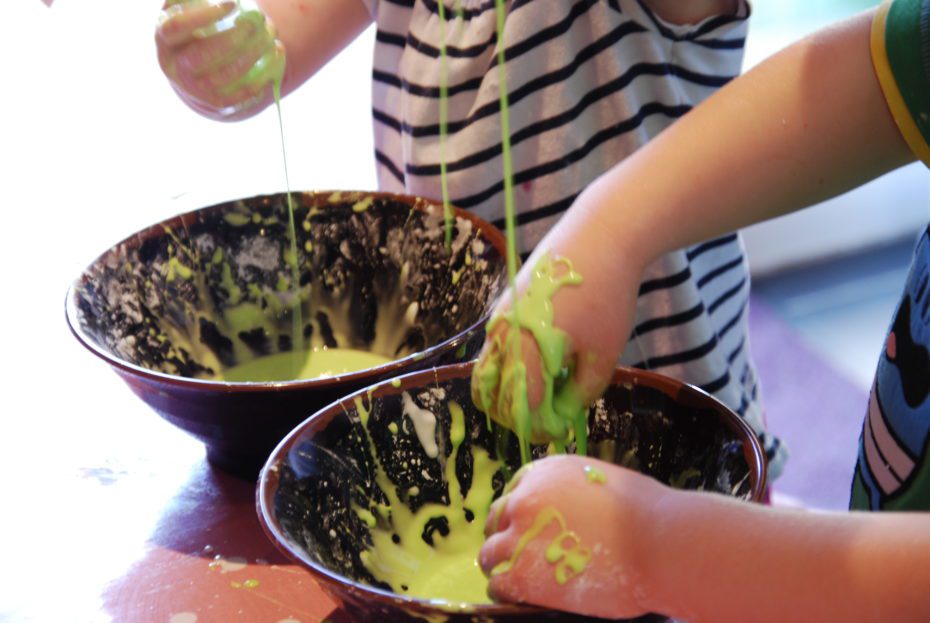
Participation Questions
- Making goo with your children and talk them through the process. While making the slime you can introduce words such as: first we will do this, and then we will…, at last we will…
- Questions you can ask about the senses: How does it feel? (Slimy, sticky, watery, smooth, etc.
Activity: Rain Stick Sensory Bottles
Age Group
3 months – 1 year
Materials needed
• Empty, clean bottles
• Sticks from the garden
• Assorted seeds
• Beans
• Small Rocks
• Scoops
• Funnels
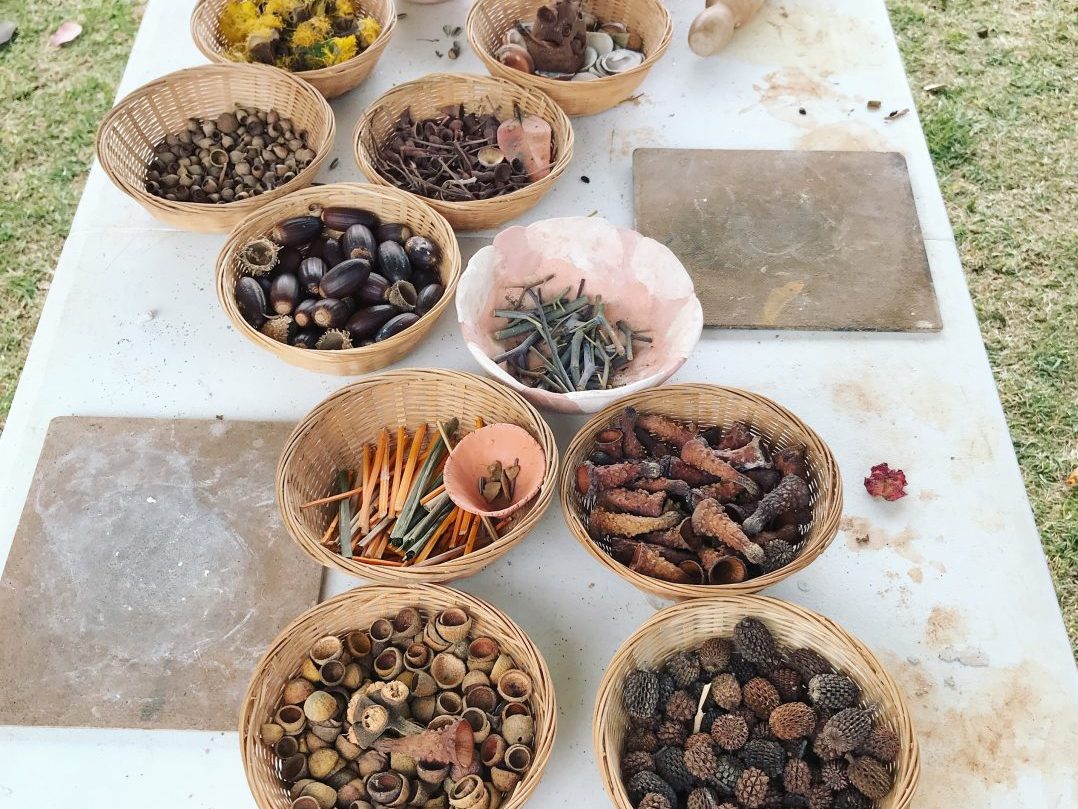
Method
- Place sticks of different lengths in the bottle
- Add a variety of the other items you have gathered
- Seal the lid tightly, use sticky tape if you want to secure this more
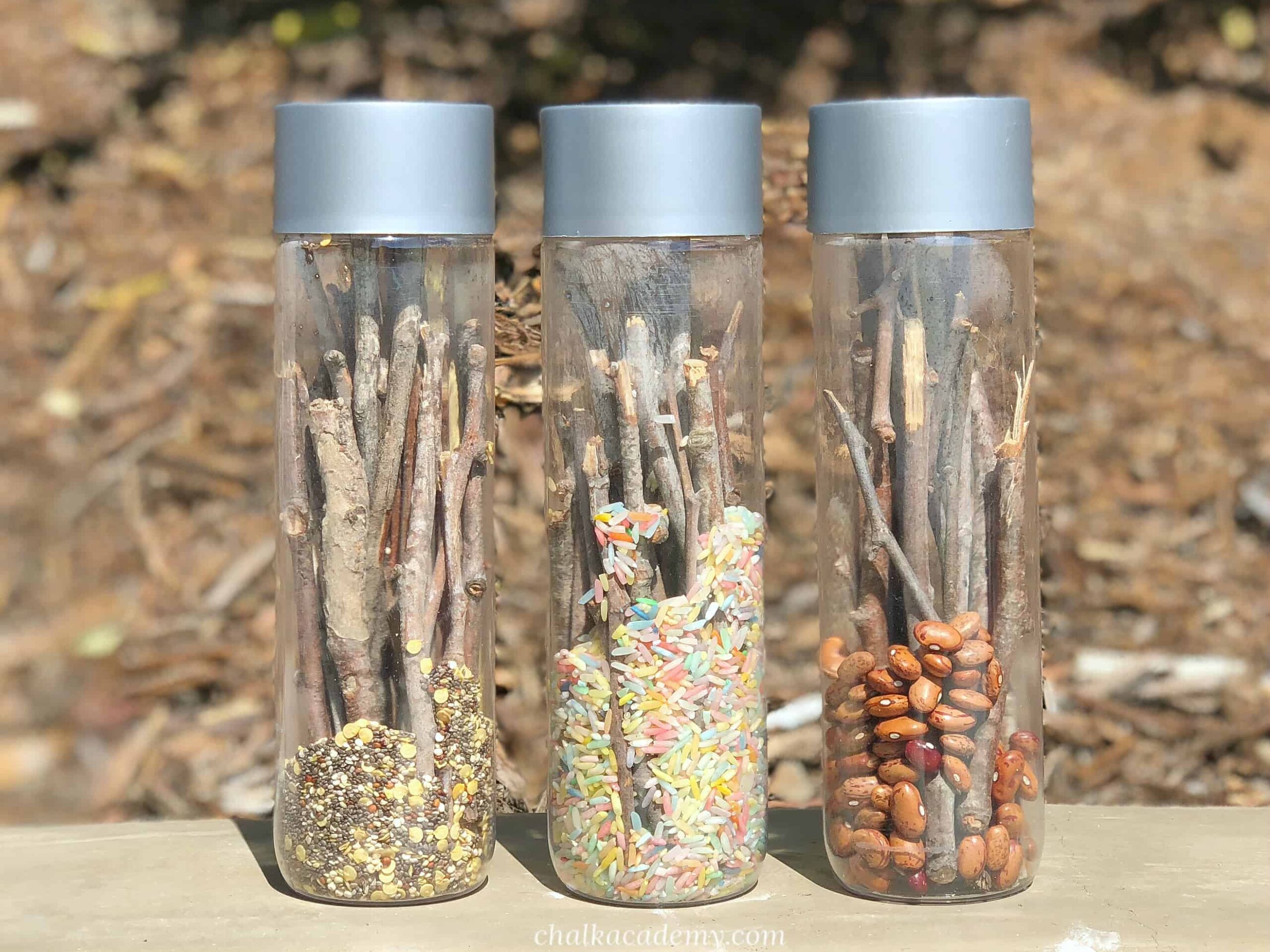
Participation Questions
- What noise can you make if you shake the bottles?
- What will happen if you turn the bottle upside down?
- What can you see in the bottles?
- List all the items in the bottles to role model language.
Activity: Sensory Drawing Tray
Age Group
15 months – 2 years
Materials needed
One of the following sensory ingredients
• Flour
• Salt
• Rice
• Cornflour
• Large tray to put it in.
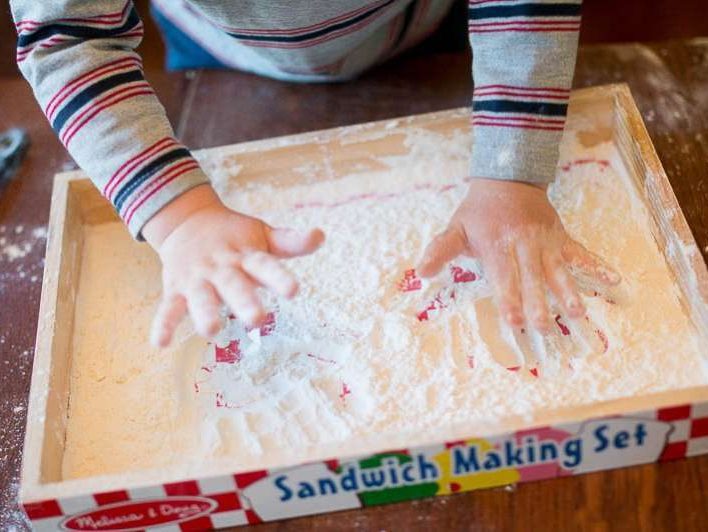
Method
- Place chosen sensory item into the tray to cover a thin layer on the bottom of the tray.
- Use finger to draw pictures and patterns in the tray.
- Enjoy and have fun.
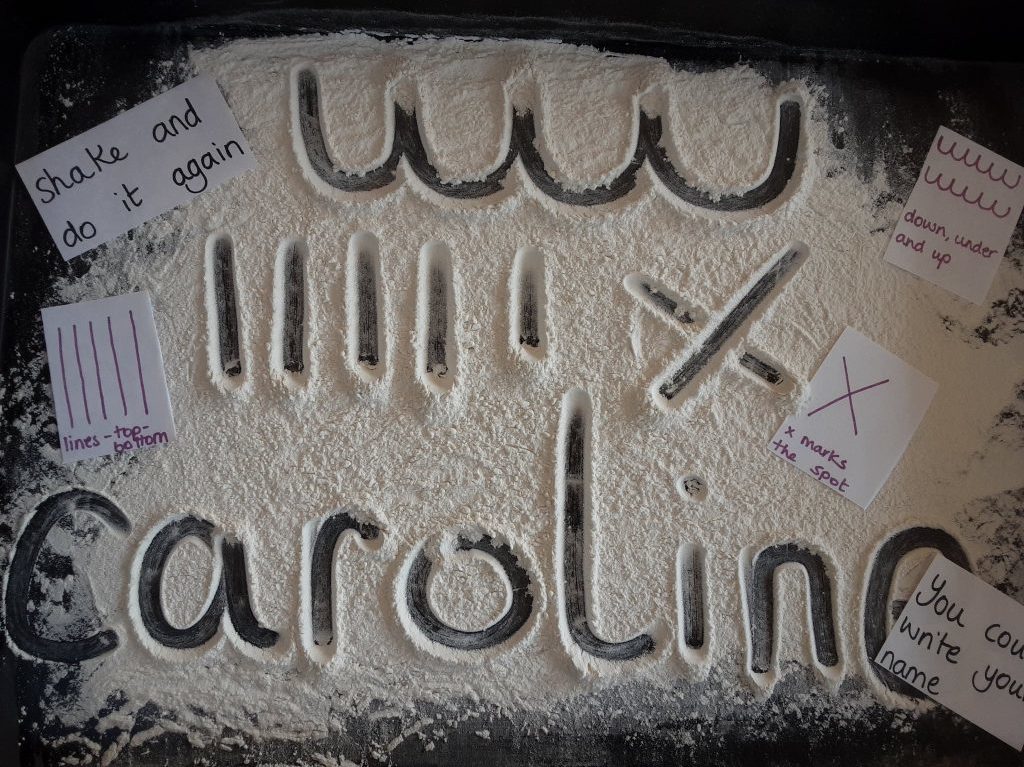
Participation Questions
- What colour is our flour/sand?
- What can you draw?
- How does it feel on your fingers?
Activity: Sensory Aroma Bottles
Age Group
3 months – 2 years
Materials needed
- Empty plastic bottles – water or soda bottles, washed and dried
- Scented items – citrus fruit, dried or fresh herbs and spices, essential oils, coffee beans etc
- Cotton balls – optional
- Needle
- Glue
- Vegetable peeler
- Small knife
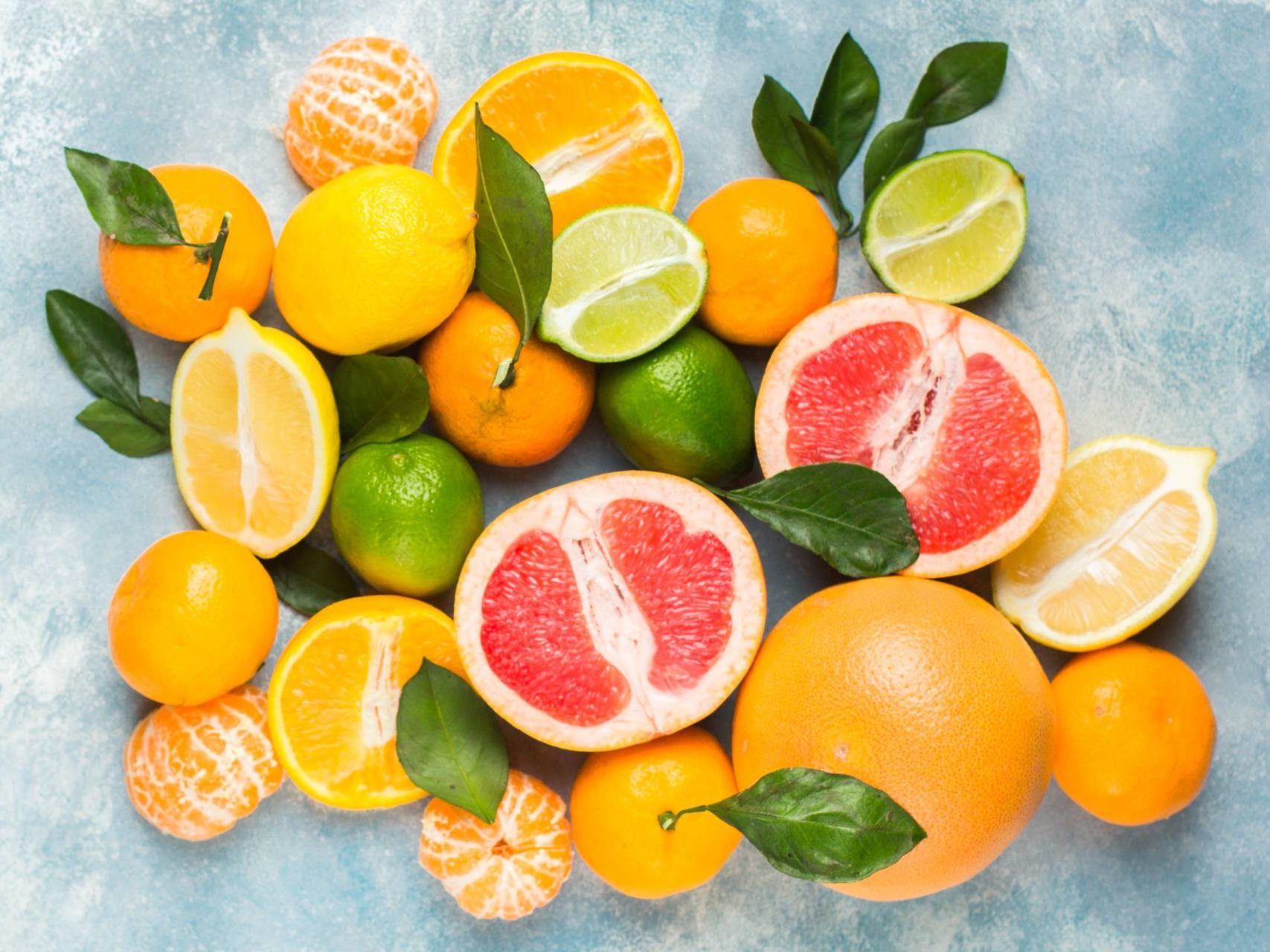
Method
- Remove any labels from the clean washed bottles
- Use the needle to carefully poke holes in the bottle and the lid.
- Remove the lid from the bottle.
- If using citrus fruit in your bottles, roughly peel the fruit.
- Place rinds in the bottles.
- Spread a thin layer of glue inside the lid of the bottle and replace the lid.
- Place the sensory bottles and the level of your child for them to explore.
If using essential oils, place the oil on cotton balls and place the cotton balls in the bottles.
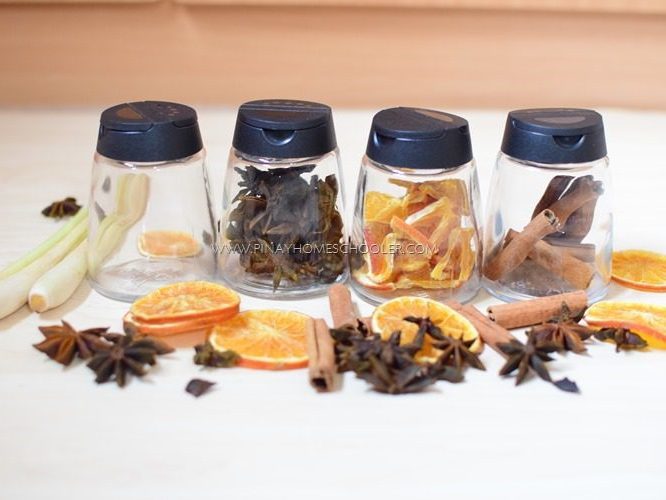
Participation Questions
- What can you smell?
- Do you like this smell?
- What do you see in the bottle?
- Can you find the yellow bottle?
- Which one is your favourite?
Activity: Chia Seed Sensory
Age Group
2 – 3yrs
Materials needed
- White chia seeds – ¼ cup
- Food colouring
- Water – 1 ¾ cups
- Lidded or sealed container
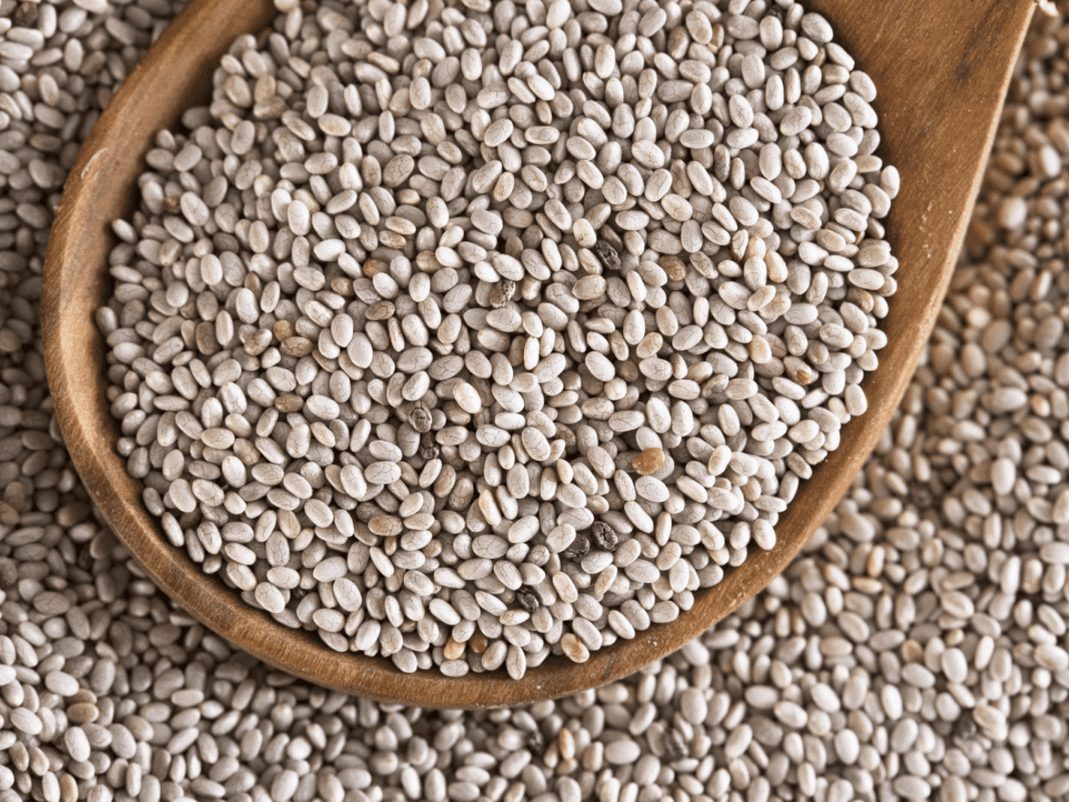
Method
- Wash Hand
- Mix the chia seeds, food colouring and water into a sealable container
- Seal the container and refrigerate overnight.
- Its ready to for play!
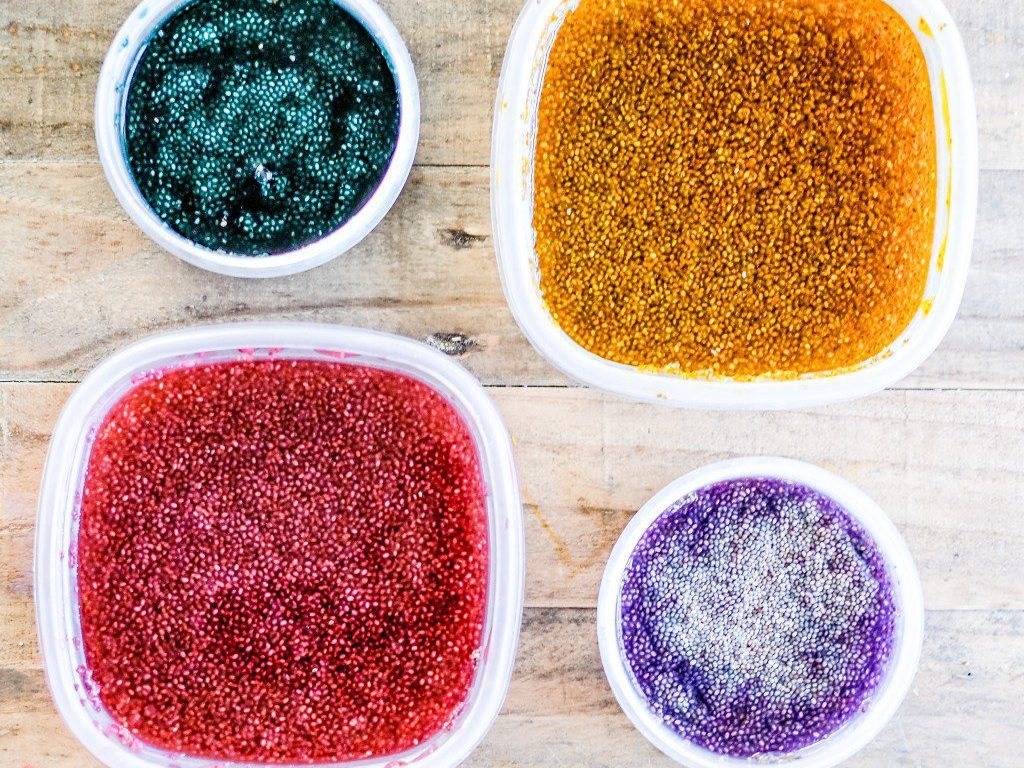
Participation Questions
- How do the chia seeds feel?
- What colours can you see and count?
- Does it feel cold on your hands?
